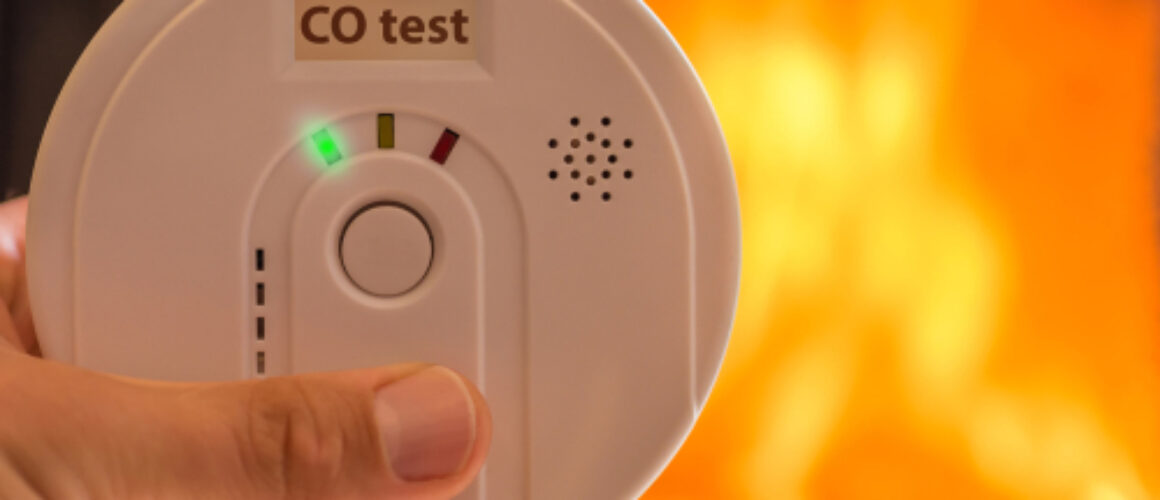Carbon Monoxide: How To Detect The Silent Killer in Your Home
Carbon monoxide is a silent and deadly gas that can be present in our homes without us even knowing it. In this blog post, we will explore the dangers of carbon monoxide, how it enters your home, and most importantly, how to detect its presence. We’ll also discuss choosing the right carbon monoxide detector and what actions to take if carbon monoxide is detected. Finally, we’ll share some tips on preventing carbon monoxide poisoning altogether. Stay informed and keep yourself and your loved ones safe from this invisible threat.
The Dangers of Carbon Monoxide
- Silent Threat: Carbon monoxide is a silent killer that cannot be detected by our senses. It is odourless, colourless, and tasteless, making it impossible to detect without the help of a carbon monoxide alarm.
- Deadly Appliances: Many household appliances, such as furnaces, stoves, and water heaters, can produce carbon monoxide if they are not properly maintained or installed. Regular inspections and maintenance are crucial to ensure these appliances do not become sources of this deadly gas.
Remember: Don’t underestimate the dangers of carbon monoxide! Install an alarm in your home and make sure your appliances are properly maintained to keep your family safe from this silent threat.
Why is Carbon Monoxide Dangerous?
Invisible and odourless, carbon monoxide is a dangerous gas that can go undetected. This silent killer blocks oxygen in the body, leading to serious health issues. It is crucial to have carbon monoxide alarms installed and regularly check appliances for any potential leaks or malfunctions.
Symptoms of Carbon Monoxide Poisoning
- Headaches and dizziness: Persistent headaches and a feeling of dizziness can be early signs of carbon monoxide poisoning. These symptoms may worsen over time if not addressed.
- Nausea and vomiting: Feeling nauseous or experiencing episodes of vomiting could indicate exposure to high levels of carbon monoxide. If you suspect poisoning, immediately seek fresh air.
- Confusion and disorientation: Carbon monoxide can affect cognitive function, leading to confusion, difficulty concentrating, and even loss of consciousness. Stay alert for these alarming signs.
Remember, don’t ignore any suspicious symptoms or strange occurrences with your appliances; they could be warning signs indicating the presence of this silent killer in your home. Stay safe!
How Does Carbon Monoxide Enter Your Home?
Carbon monoxide can enter your home through various sources such as malfunctioning appliances, blocked ventilation systems, and exhaust fumes from vehicles. It can spread quickly throughout your living spaces, infiltrating every room of the house.
Once carbon monoxide is released into the air, it easily travels through open doors or windows, and even seeps through walls and floors. This silent killer does not discriminate and can affect any area of your home where there is inadequate ventilation or faulty equipment.
Common Sources of Carbon Monoxide
Faulty or poorly maintained gas appliances can be a common source of carbon monoxide. Over time, these appliances may develop leaks or malfunction, leading to the release of this dangerous gas. Wood-burning stoves and fireplaces are another potential culprit. When not properly ventilated or maintained, they can produce significant amounts of carbon monoxide. Additionally, running vehicles in an attached garage poses a serious risk as the exhaust fumes can seep into living spaces undetected. It is vital to regularly inspect and maintain these sources to ensure safety in your home.
How Does Carbon Monoxide Spread?
Carbon monoxide can spread throughout your home in various ways. Leaks in heating systems and chimneys allow the deadly gas to seep into different areas. Additionally, carbon monoxide can travel from one room to another through ventilation systems, circulating it throughout your home. Areas with poor airflow are also at risk of experiencing a buildup of this silent killer. It’s crucial to be aware of these potential pathways for carbon monoxide so that you can take appropriate measures to protect yourself and your loved ones.
Choosing the Right Carbon Monoxide Detector
There are two main types of carbon monoxide detectors: plug-in and battery-powered. Plug-in detectors are convenient as they do not require batteries, but they rely on a power source. Battery-powered detectors offer more flexibility in terms of placement and can be installed anywhere in the home.
When installing carbon monoxide detectors, it is important to place them on every level of your home, including bedrooms and living areas. Install them at least 10 feet away from any fuel-burning appliances or sources of combustion such as furnaces, water heaters, or fireplaces. Additionally, avoid placing them near windows or vents that could dilute the concentration of carbon monoxide gas in the air.
Types of Carbon Monoxide Detectors
Battery-powered carbon monoxide detectors offer the flexibility to be placed anywhere in your home, ensuring constant protection even during power outages. These detectors are easy to install and maintain, providing peace of mind with their reliable performance.
Plug-in carbon monoxide detectors are convenient options that can be simply plugged into any standard electrical outlet. They provide continuous monitoring without the need for batteries or frequent replacement, making them ideal for busy households.
Hardwired carbon monoxide detectors are integrated into your home’s electrical system, offering a seamless and permanent solution. With their direct connection to mains power, these detectors provide uninterrupted monitoring and eliminate the hassle of battery changes.
By choosing the right type of carbon monoxide detector for your home, you can ensure round-the-clock protection against this silent killer. Keep your loved ones safe by investing in a reliable detection system today.
Where to Install Carbon Monoxide Detectors
Near bedrooms and sleeping areas, carbon monoxide detectors should be installed to provide early warning in case of a leak. It is also important to have detectors on every level of the home, including the basement, as carbon monoxide can accumulate anywhere. Additionally, installing detectors in close proximity to fuel-burning appliances helps to quickly detect any potential leaks and ensure your safety.
How to Test Carbon Monoxide Detectors
Understand the importance of regular testing. Carbon monoxide is a silent killer that can be deadly if undetected. Regularly testing your carbon monoxide detectors ensures they are functioning properly and can alert you to any potential danger.
Check the manufacturer’s guidelines for testing frequency. Different brands and models may have different recommendations for how often to test their carbon monoxide detectors. It is important to follow these guidelines to ensure accurate and reliable detection.
Perform a manual test on your carbon monoxide detectors. Most detectors have a test button that allows you to simulate the presence of carbon monoxide in order to check if the alarm sounds. Pressing this button regularly will help ensure your detector is working as it should be, providing you with peace of mind and protection against this invisible threat
Actions to Take if Carbon Monoxide is Detected
- Evacuate the premises immediately and call for emergency assistance. Do not waste any time in ensuring your safety and that of your loved ones.
- Once everyone is safely outside, identify and fix the source of carbon monoxide by contacting a professional electrician or gas engineer. It is crucial to address the issue promptly to prevent further risks.
Remember, detecting carbon monoxide early can save lives, so always prioritize safety above all else.
Evacuate and Call for Help
Get everyone out of the house immediately. Your safety is paramount, so make sure to evacuate all occupants as quickly as possible. Call emergency services or the local fire department right away. They are equipped to handle these types of emergencies and will be able to provide immediate assistance. Remember, do not re-enter the house until it has been deemed safe by professionals. Safety first!
Identify and Fix the Source of Carbon Monoxide
Open windows and doors to ventilate your home. Turn off all potential sources of carbon monoxide, such as gas appliances. Contact a professional technician to inspect and repair any faulty equipment.
- Ventilate your home by opening windows and doors.
- Ensure all gas appliances are turned off.
- Seek the expertise of a professional technician for inspection and repairs.
Preventing Carbon Monoxide Poisoning
Regular maintenance of appliances is crucial in preventing carbon monoxide poisoning. Make sure to have your gas or oil-burning appliances inspected annually by a professional technician who can identify any potential leaks or malfunctions. Additionally, be vigilant about cleaning and replacing filters regularly to ensure proper ventilation and reduce the risk of dangerous carbon monoxide buildup.
Proper ventilation is key when it comes to keeping your home safe from carbon monoxide. Ensure that all vents, flues, and chimneys are clear of debris and functioning correctly. Never block or cover these openings as it can lead to the accumulation of harmful gases indoors. Install carbon monoxide detectors throughout your home, especially near sleeping areas, for early detection in case levels become hazardous.
Educating yourself and your family about the dangers of carbon monoxide is essential for prevention. Learn how to recognize symptoms such as headaches, dizziness, nausea, confusion, or flu-like symptoms that could indicate exposure to this silent killer. Teach everyone in your household how to respond if an alarm sounds: immediately evacuate the premises and call emergency services for assistance.
By following these preventive measures – regular appliance maintenance, proper ventilation practices, and education on recognizing symptoms – you can protect yourself and your loved ones from the deadly threat of carbon monoxide poisoning.
Regular Maintenance of Appliances
Regular maintenance of appliances is crucial to ensure their proper functioning and safety. It is important to inspect gas appliances annually to identify any potential issues and prevent leaks. Additionally, cleaning or replacing furnace filters regularly improves air quality and prevents dust buildup. Lastly, checking for leaks in fuel-burning appliances can help detect carbon monoxide emissions early on, protecting you and your family from the silent killer. Stay vigilant with regular maintenance to keep your home safe and secure.
Properly maintaining your appliances is essential for their longevity and efficiency. An annual inspection of gas appliances helps identify any potential problems before they escalate into major issues, while cleaning or replacing furnace filters regularly ensures clean air circulation throughout the house. Moreover, it’s crucial to check fuel-burning appliances for leaks as this will help prevent carbon monoxide poisoning in your home. By staying proactive with regular maintenance tasks, you can ensure a safe living environment for yourself and your loved ones.
Educating Yourself and Your Family
Learn the symptoms of carbon monoxide poisoning to protect your family. Headaches, nausea, dizziness – these are all signs to watch out for. Teach your loved ones how to recognize them too, so they can take action if needed. And make sure your children understand the dangers and what steps to take in case of a leak. Knowledge is power when it comes to keeping your family safe from this silent killer.
Conclusion
Carbon monoxide detection is crucial for home safety. This odourless and colourless gas can be deadly, making it essential to have functioning detectors in your home.
Regularly test and maintain your carbon monoxide detectors to ensure their effectiveness. Replace batteries as needed and conduct monthly tests to make sure they are functioning properly.
Take immediate action if you suspect a carbon monoxide leak. Open windows, evacuate the premises, and call emergency services right away. Remember, early detection and swift response can save lives.




